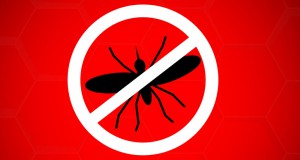
Zika virus has been in the news recently due to growing concerns about its global spread. If you have never heard of Zika virus before, you are not alone. Although first discovered in the 1940s, Zika has not been the subject of much study as infection is considered rare and the symptoms mild. However, all this has changed in recent months due to the rapid spread of the virus in Latin America, where it has been associated with an increased incidence of microcephaly, a severe birth defect where babies are born with underdeveloped brains. Although the connection of Zika with microcephaly is not yet proven, the circumstantial evidence is strong, leading the World Health Organization to declare the spread of Zika virus an international public health emergency earlier this week.
Zika virus is a member of the Flaviviridae family. Like it’s more famous and deadly cousins—dengue, yellow fever virus and West Nile virus—it is transmitted to humans by mosquitoes and has a single-stranded RNA genome. The spread of Zika virus to the Americas follows that of other mosquito-borne RNA viruses, dengue and West Nile Virus, all of which have arrived over the last 20 years.
In an article published in the New England Journal of Medicine in January, “Zika Virus in the Americas — Yet Another Arbovirus Threat” the authors (Anthony S. Fauci and David M. Morens) point out that the spread of Zika and other “unimportant” RNA viruses transmitted by insects is on the rise, and make a call for urgent research geared towards understanding more about their biology and ecology, as well as more effort to create vaccines. They also point out the human behaviors that perhaps make it unsurprising that viruses previously confined to distinct geographical areas are now capable of spreading on a global scale.
..in our human-dominated world, urban crowding, constant international travel, and other human behaviors combined with human-caused perturbations in ecologic balance can cause innumerable slumbering infectious agents to emerge unexpectedly
Zika is one example of a “slumbering infectious agent” that appears to have woken up, what remains unclear is why and how. Today, the need for Zika research is urgent in order to determine if the connection with microcephaly is causative, and also to understand why a virus so innocuous that people may not even notice they are infected should suddenly be associated with such a severe effect. The emergence and spread of Zika virus underscores the growing importance of continued investment in nimble research capabilities, global surveillance efforts, and robust public health systems.
Further Reading about Zika Virus
- Fauci, A.S., and Morens, D.M. Zika Virus in the Americas — Yet Another Arbovirus Threat. New England Journal of Medicine, Jan 13, 2016.
- Vogel, G., Cohen, J., and Enserink, M. Zika virus: Your questions answered. Science Jan. 29, 2016. [Accessed: February 3, 2016]
- Zika Virus. Centers for Disease Control and Prevention.
Isobel Maciver
Latest posts by Isobel Maciver (see all)
- 3D Cell Culture Models: Challenges for Cell-Based Assays - August 12, 2021
- Measuring Changing Metabolism in Cancer Cells - May 4, 2021
- A Quick Method for A Tailing PCR Products - July 8, 2019
